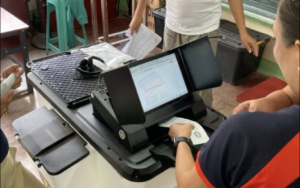There have been some new developments regarding the ongoing dispute in the Asia Pacific. A US aircraft carrier strike group was reported patrolling the South China Sea last week. Days after, Beijing told Washington not to challenge its sovereignty in the waterway.
China asserts ownership of almost all of the resource-rich waters despite rival claims from several Southeast Asian countries. It has rapidly built reefs into artificial islands capable of hosting military planes. In line with this, the USS Carl Vinson aircraft carrier group engaged in routine operations in the South China Sea; ships and aircraft recently conducted exercises off Hawaii and Guam.
We can see here that the defense posturing of the United States is trying to challenge China’s flexing muscle with the Asia-Pacific region. America is trying to use pseudo-hard politics here. Hard on its frontal posture, yet soft on its remarks (the United States used to say that Asia-Pacific countries need to “maintain and improve their readiness and develop cohesion as a strike group”).
If the United States is after the unification of the region, then we look forward to its demonstrating its capabilities while building on the existing, strong relationships with allies, partners and friends in the Indo-Asia-Pacific region.
Thus, there is a great necessity to revisit, create, complete, and institutionalize the Code of Conduct on the South China Sea (COC) this year, if not next year. Moreover, the target date of the completion of the COC framework is 2017.
The Philippines, being this year’s Asean host, should prefer not to escalate the tension because while the Chinese are talking to the Asean for a possible COC, they are actually doing something else on the ground, engaging in escalating confrontational rhetoric with the United States, and this has been fanning tensions among members of the Asean. The challenge is always in the hands of Asean and our beloved Philippines.
MARIA JUMELA E. DECENA, mjedecena@gmail.com



